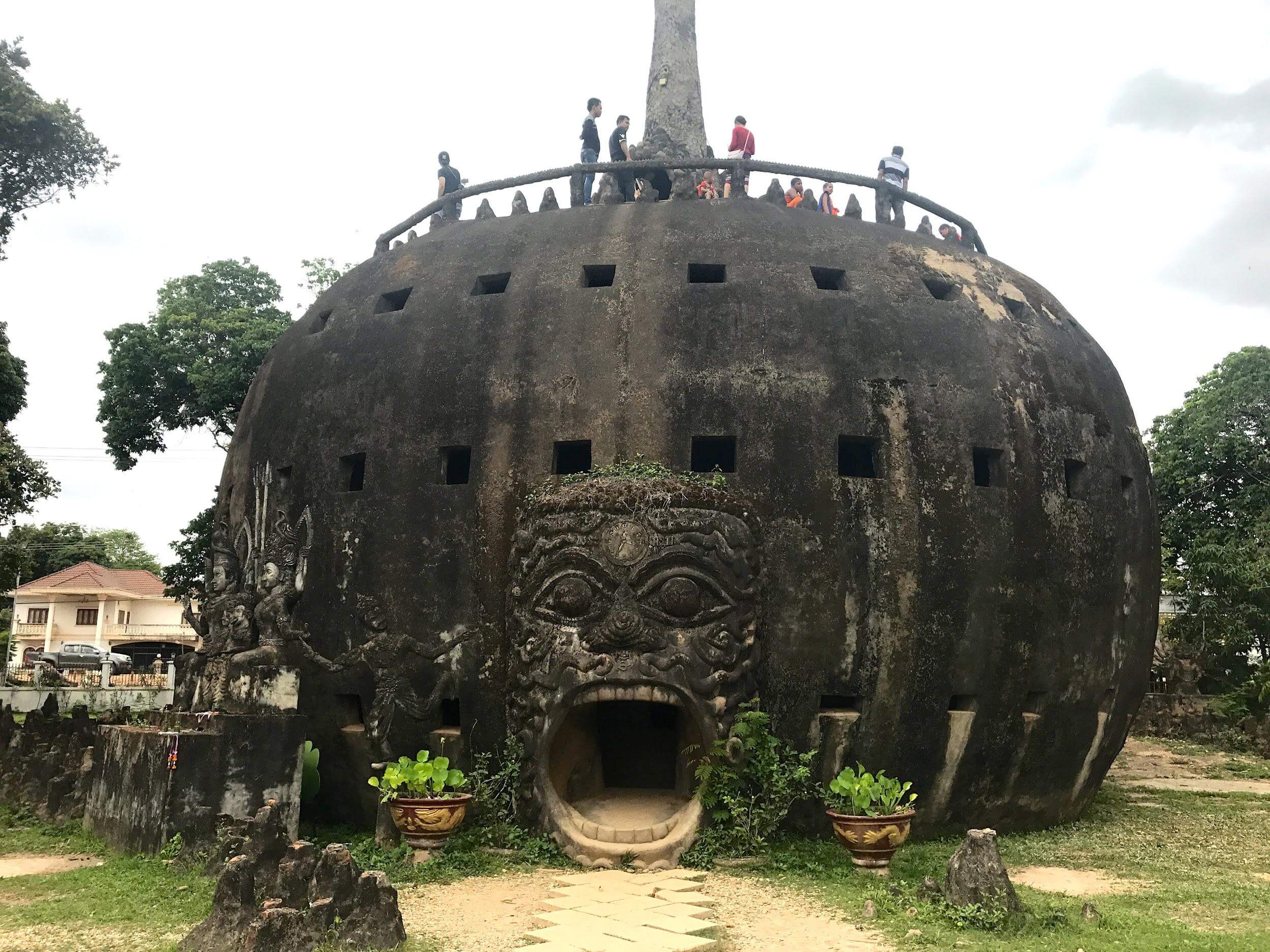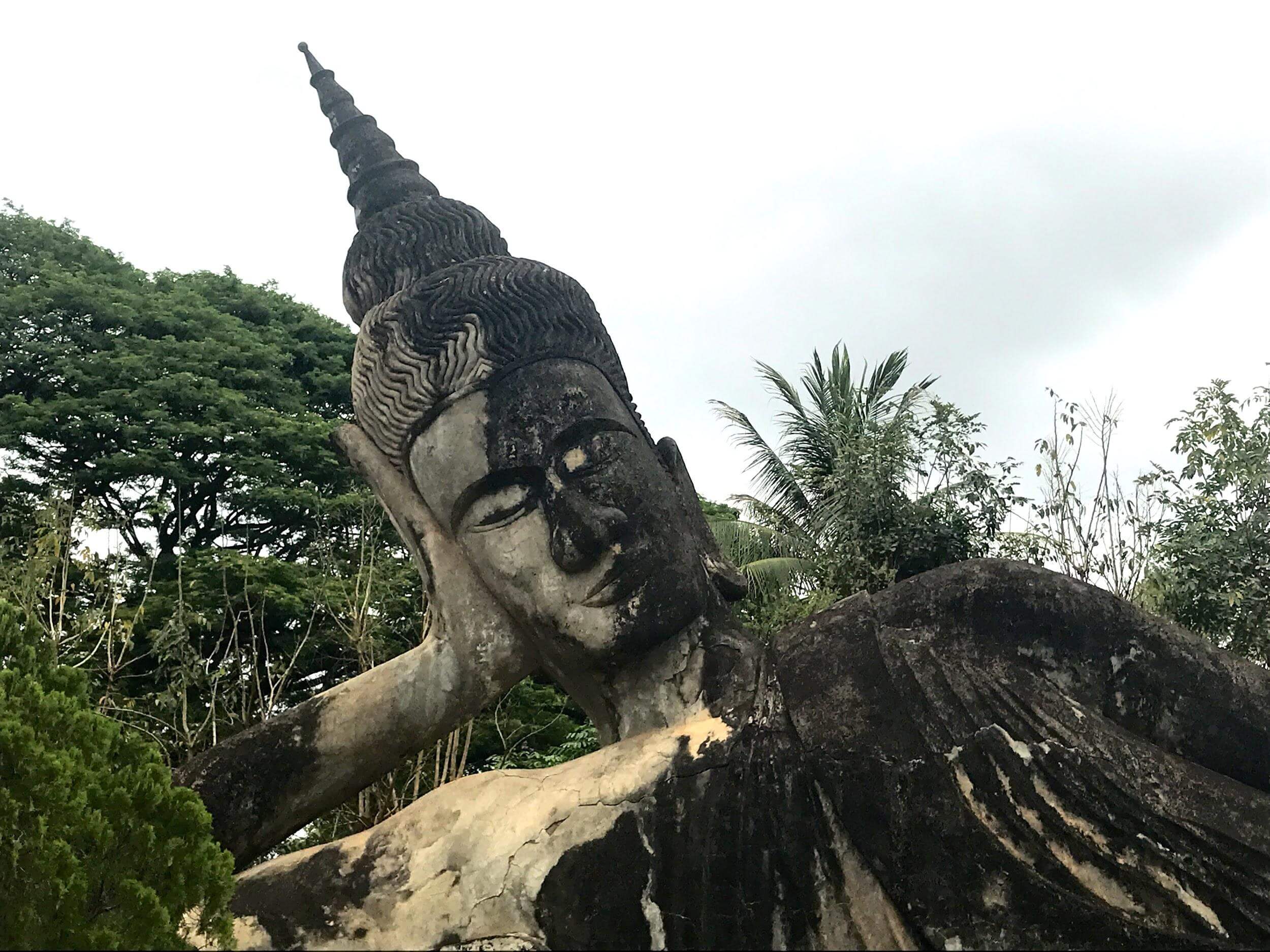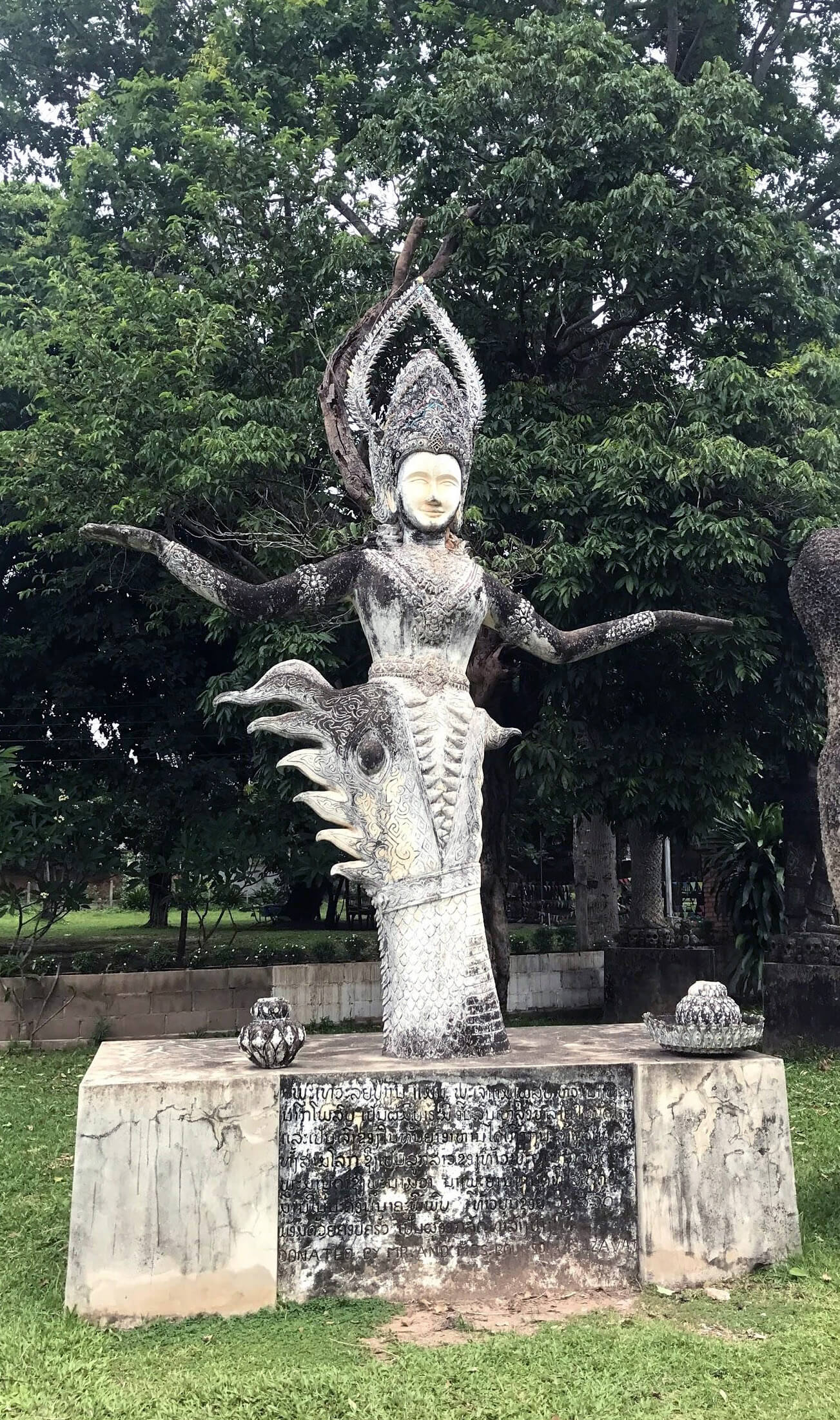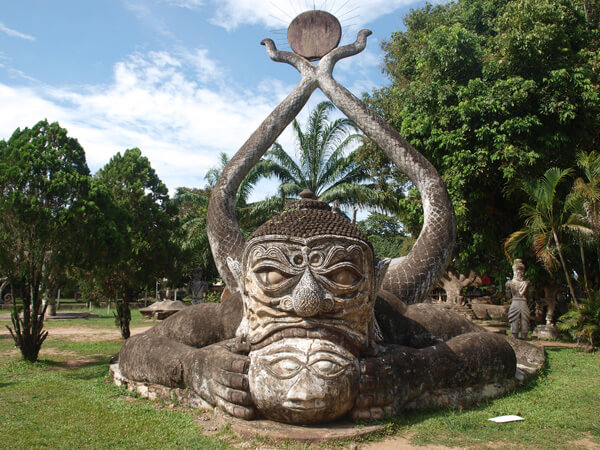Construction of the park began in 1958, initiated by Bunleua Sulilat a religious figure who created an idiosyncratic blend of Hinduism and Buddhism. Today, the public park serves as a popular tourist attraction, with visitors from all over the world riding rickety tuk-tuks and local buses to see the magnificent sculptures of animals, gods, and demons.

One of the largest sculptures is also one of the first to catch your attention. To the right of the entrance lies an enormous pumpkin-shaped sculpture, hollowed out with staircases so that visitors may climb to the top for a 360 degree view of the park. To enter the sculpture, visitors must first climb through the mouth of a terrifying demon.

A personal favorite of mine is the massive reclining Buddha, pictured below, which embodies the laid-back, relaxed attitude it behooves a traveler in Laos to take. Many visitors can be seen taking photos imitating this and other curious and impressive sculptures throughout the park.

Budget approximately an hour. Souvenir shops and snack stands can be found near the entrance. There’s seating for the weary sightseer toward the rear of the park along the river.
Beyond the Buddha Park, there’re several worthwhile attractions in and around Vientiane. The Great Sacred Stupa is a must-visit sacred monument emblematic of the country and its people. There’s also the much more recent Patuxai, a monument that celebrates victory over French colonial rule but is conspicuously French in its design — a testament to the complexity of the French legacy in the country.
